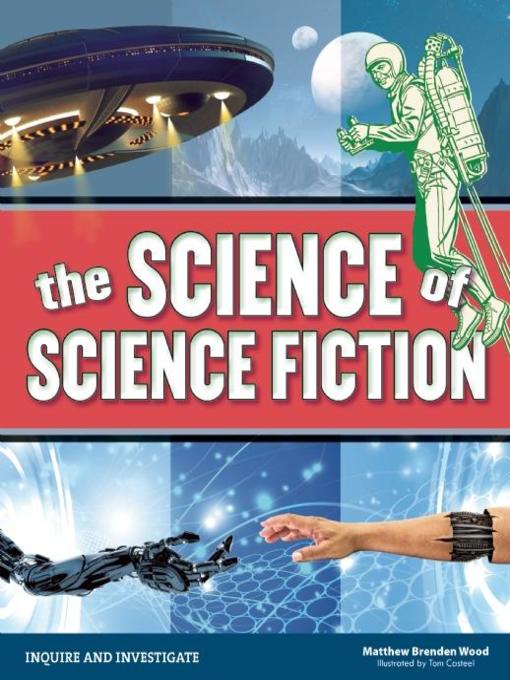Early science fiction imagined a world with space travel, video calls, and worldwide access to information, things we now know as NASA's human spaceflight program, Skype, and the Internet. What next? Could we really bring back the dinosaurs, travel to a distant star, or live on Mars?
In The Science of Science Fiction, readers ages 12 to 15 explore the science behind classic and modern science fiction stories, including artificial intelligence, androids, and the search for alien life. They learn how cutting edge concepts, including time dilation and genetic manipulation, influence today's fiction.
The Science of Science Fiction promotes critical thinking skills through inquiry, discovery, research, analysis, and reflection of key scientific ideas and concepts made popular by many titles in science fiction. Each chapter features informative sidebars and video and website links for an in-depth look at key topics. Science-minded experiments include a simple demonstration of artificial gravity using a bucket of water and calculating the speed of light using chocolate in a microwave. This variety of resources ensures the material is accessible to students with diverse learning styles.
-
Creators
-
Series
-
Publisher
-
Release date
February 20, 2017 -
Formats
-
Kindle Book
-
OverDrive Read
- ISBN: 9781619304680
- File size: 11229 KB
-
EPUB ebook
- ISBN: 9781619304680
- File size: 11229 KB
-
-
Languages
- English
-
Levels
- Lexile® Measure: 1060
- Text Difficulty: 6-9
-
Reviews
-
Publisher's Weekly
December 12, 2016
In this intriguing addition to the Inquire and Investigate series, Wood explores the science behind cloning, time travel, and other science fiction staples. A nifty timeline contrasting real-world developments with their pop culture predecessors (such as smartwatches and Dick Tracy) sets the stage for discussions of robotics, genetics, astronomy, and the theory of relativity. Comics, sidebars, and experiments offer a variety of approaches to the topics (such as using a microwave and chocolate bar to calculate the speed of light), and QR codes provide links to supplemental online resources. It’s an engrossing look at how science and fiction converge and diverge. Ages 12–15. -
School Library Journal
February 1, 2017
Gr 6 Up-Blockbuster hits like Star Wars and Jurassic Park have plots, settings, and technology that could exist only in the far distant future. But as science advances and new discoveries are made, fantastical sci-fi technologies might be closer to reality than one may think. This title compares fictional stories with real-life scientific breakthroughs, including artificial intelligence, cloning, space travel, and beyond. Older examples such as H.G. Wells's The Time Machine and more contemporary movie releases like 2015's The Martian are cited. After presenting a work of sci-fi and its fictional aspects, the author uses information and theories about the subject to explain how possible or impossible it is presently and in the future (for instance, the chances of humans traveling to Mars or cloning a woolly mammoth). Accompanying the main text on each page are additional facts, photos, and short comics infused with a bit of corny humor. Each of the six chapters ends with a section of projects and discussion questions that make for great student interaction or homework assignments.
Copyright 2017 School Library Journal, LLC Used with permission.
-
Formats
- Kindle Book
- OverDrive Read
- EPUB ebook
subjects
Languages
- English
Levels
- Lexile® Measure:1060
- Text Difficulty:6-9
Loading
Why is availability limited?
×Availability can change throughout the month based on the library's budget. You can still place a hold on the title, and your hold will be automatically filled as soon as the title is available again.
The Kindle Book format for this title is not supported on:
×Read-along ebook
×The OverDrive Read format of this ebook has professional narration that plays while you read in your browser. Learn more here.


